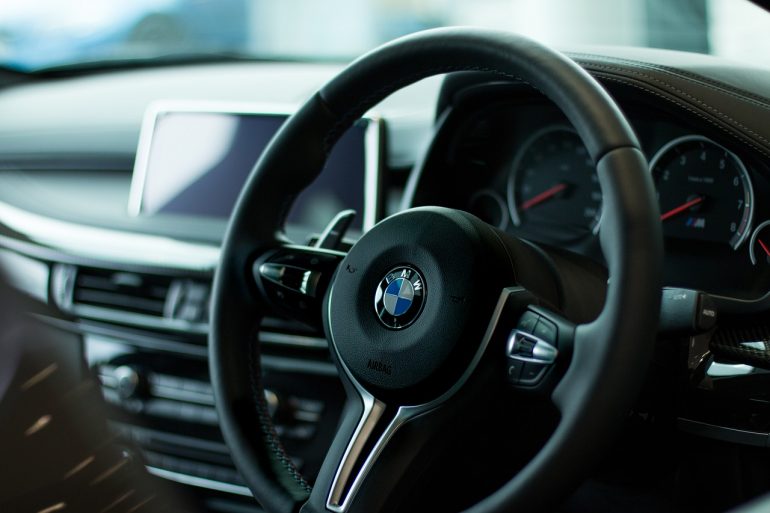If you’ve decided you want to buy yourself a new car, you’re definitely not stuck for choice. There is a plethora of options available to buy on the market, and it can be overwhelming when you’re trying to find the perfect car for yourself. Just one Google search comes up with hundreds of models available in a variety of colours and sizes. However, buying a car does not have to be a difficult process. In fact, it’s quite simple if you follow the right steps. Cars are bought and sold every day across the world for a variety of reasons. Some people like to show off their wealth by purchasing a Porsche or Ferrari. Others follow the trends and buy themselves an SUV or the latest Ford Fiesta. And with the increasing awareness of the detrimental impact that driving has on the environment, more people are opting for electric cars as a more sustainable option for driving.
Here are five simple steps to follow when buying yourself a new car.
1. Ask Yourself the Key Questions
There are certain things that you need to ask yourself before deciding what car model is going to be best for you. These questions will determine the size and type of car that is suitable for your lifestyle. Once you’ve answered the following questions, it will make your decision much easier.
– How much money do you have to spend?
– How many seats do you need?
– How big do you want the car to be?
– Do you need a large boot?
– How old or new do you want the car to be?
– What engine size are you looking for?
– What insurance band is within my budget?
– How high is your annual mileage?
The answers to these questions will determine which car meets your individual needs. For example, if you’ve got seven members in your family, and you regularly travel long distances, a four-seat, three-door small car with a 1.0 litre engine is probably not your best option. If you have a small budget, going for a brand-new luxury car might not be possible.
2. Decide Where You Want to Buy From
There are several different places you can purchase a car from. Below discusses the advantages and disadvantages of each option to help you make an informed decision on which to choose.
Private Sellers
When somebody is selling a used car that they legally own, they are a private seller. This transaction is usually irreversible, and you have to be extra cautious that the seller has disclosed any faults with the car they’re selling. However, you can usually barter and get a cheaper price when buying from a private seller.
Independent Sellers
Used car dealerships that aren’t tied to particular car manufacturers are known as independent sellers, meaning they don’t have to sell certain makes of cars. They are less biased and won’t be as obliged to push certain makes in front of you. This does mean that they have fewer varieties of cars to offer.
Franchised Car Dealers
Unlike independent sellers, franchised car deals are linked to certain manufacturers. They are acting as agents to sell specific makes of vehicles. For this reason, they may be biased and have fewer makes to choose from, but they will be experts in their brand and can offer you the latest deals.
Car Brokers
Car brokers are great when you don’t want to do the bartering, but you still want the discount. Car brokers are used by many to buy new cars and they can often give good advice on what is best for you. More experienced car brokers will have an extensive contact list, so they will find you the best deals on the market. The downside is that you often have to collect the car yourself.
Car Supermarkets
Car supermarkets offer a number of cars makes all in one place, and the prices are often affordable. They’re perfect if you’re unsure what sort of car you want, as you can compare them side by side. The disadvantage is the limited choice of specifications and colours, as the cars are bulk ordered as opposed to being ordered new from the manufacturers. Generally, all of the servicing and repairs are your responsibility once you’ve purchased the car. There is no aftersales follow-up.
3. View the Car
Once you’ve decided which option you’re going to use, it’s time to go and view some cars! If you choose a private or independent seller, you will need to arrange a specific time and place to meet them. Other places offer walk-ins where you can go and browse the cars as and when you want to.
Be sure to take somebody with you to view the car if you’re not great with cars. This ensures that you will spot any faults or issues with the car before committing to buy it. This is important, as most car exchanges or purchases are final and cannot be reversed.
4. Organise Your Insurance
When you’ve decided which car you’re going to buy, you need to sort out your car insurance. It’s important to shop around for the best deals, as insurance prices can vary greatly with each company. Be sure to organise your insurance to start on the same day that you’re going to pick up your car, so you’re covered when you drive it home.
5. Purchase the Car
The final step is where you can finally be the legal owner of your new car. After you’ve searched for the right model of car that is suitable for your preferences and needs, it’s time to make the purchase final. Often, there are a number of forms that you need to read and sign before paying. Make sure you read these documents carefully to spot anything that you might not agree with before signing.
Once the forms are signed and the payment has been made, the car is yours!





